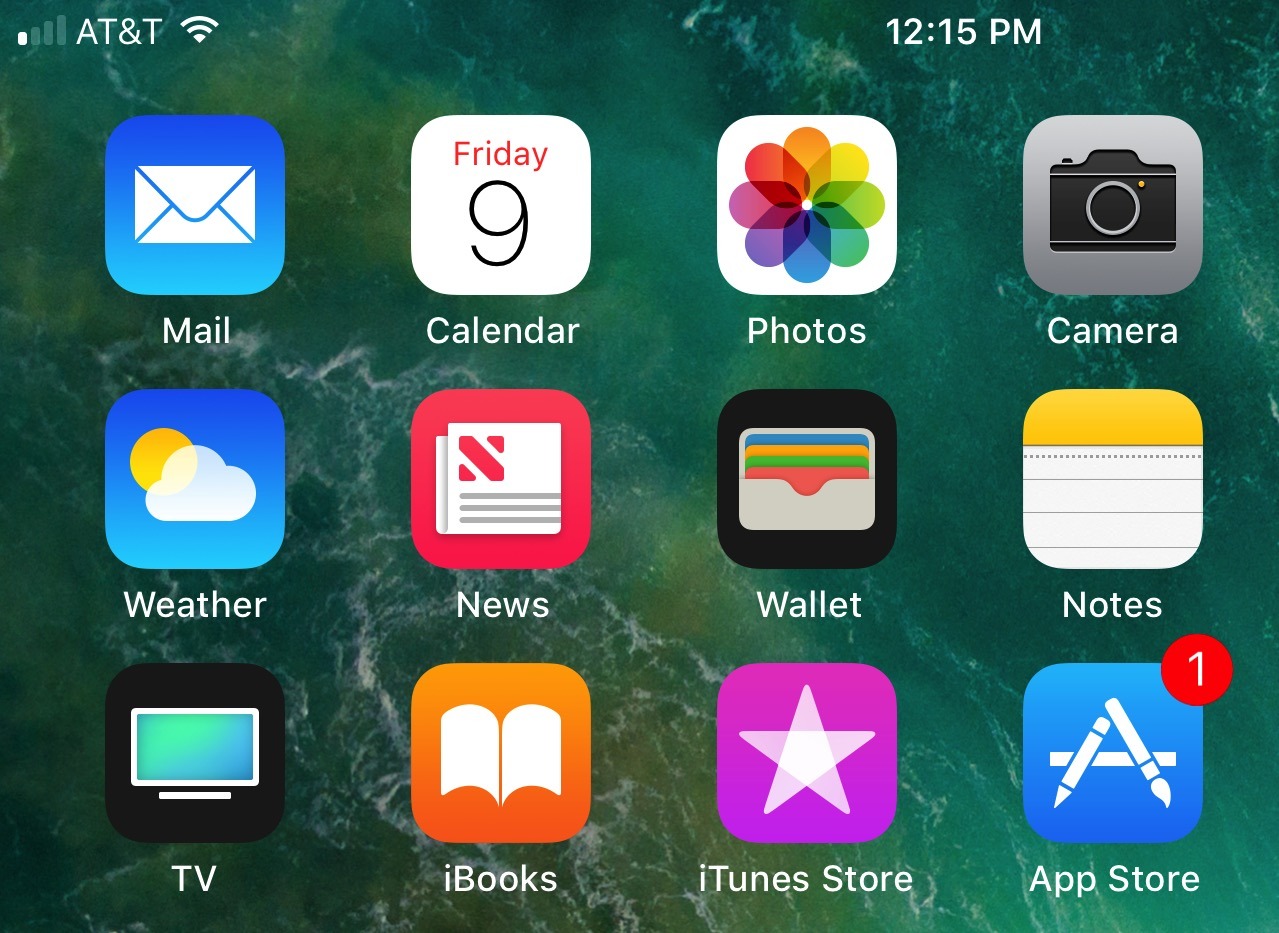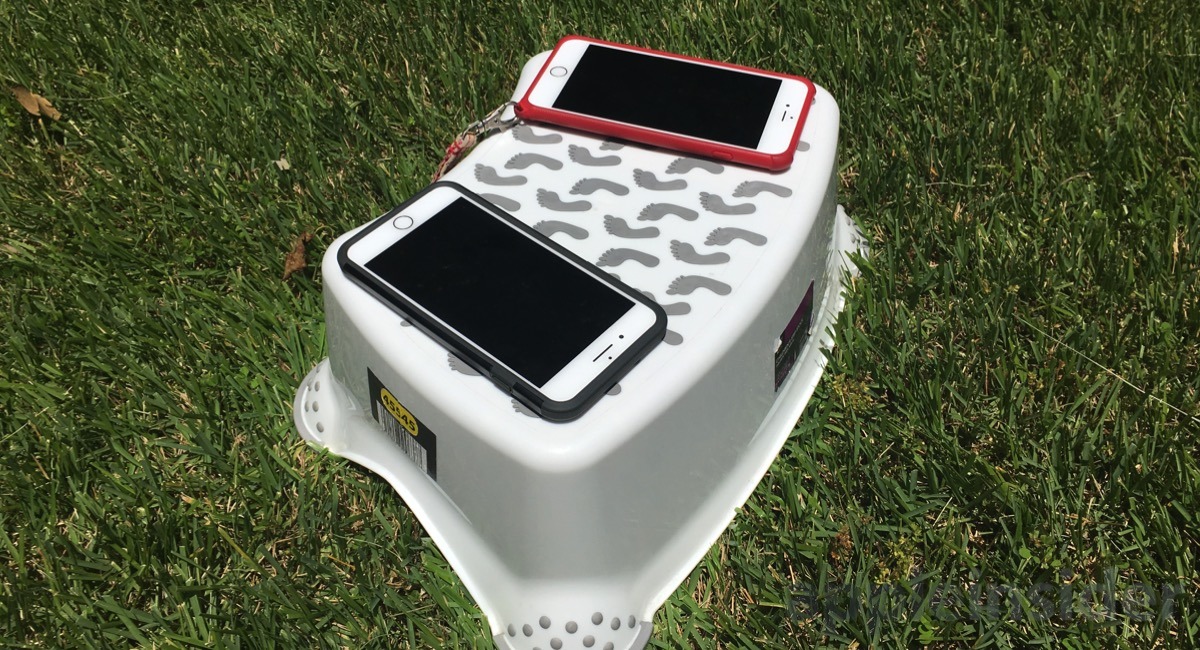In iOS 11, Apple has shifted to four simple bars displaying LTE strength to the user, stepping away from the five dots used in iOS 7 through iOS 10. In doing so, it has also changed the ranges somewhat — AppleInsider examines the differences.
Editor's note: This examination was originally published in June of 2017, but has been updated and republished to reflect the release version of iOS 11.
The shift found in iOS 11 beta 1 is a minor change from a presentation standpoint, and it has probably been done in part to accommodate the "notch" in the forthcoming iPhone X. However, as part of the shift, Apple appears to have altered the algorithm for representing signal strength to the user somewhat.
Testing the signal strength display
The signal that the iPhone measures when in Field Test mode is measured in decibel-milliwatts (dBm). The unit is a combined one, and is a unit of electrical power in decibels (dB), referenced to 1 milliwatt (mW).
One full milliwatt of power delivered is 0 dBm. The closer the delivered power is to 0 dBm, the stronger the signal — thus the negative, logarithmic scale on the unit.
Utilizing a walking path that has been previously been used for LTE strength measurement, AppleInsider carried along a pair of iPhone 7 Plus phones, an iPhone SE, and a plastic stool. One iPhone 7 Plus is on iOS 11 and the other two phones are on iOS 10.
For measurements, the phones were placed on a plastic stool, with the observer standing four feet away, eliciting some questions from passers-by. If anybody approached the phones closer than four feet, the 60-second count was re-started to eliminate the possibility of a "meat shield" between a nearby cell tower, and the iPhones.
During the transit, the signal strength as identified by the iPhone SE in Field Test mode was monitored after standing in place for 60 seconds or longer, and compared to the graphical representation on the two iPhones.
Where the dot and bar graphical progression through the dBm scale is mostly linear, the display ranges vary between iOS 10 and iOS 11.
The iOS 10 iPhone gave one dot between -100 and -110 dBm, with -88 to -100 having two, -75 to 88 having three, -60 to -75 having four, and anything better than -60 dBm having a full five bars.
Shifting to the iPhone 7 Plus with iOS 11, one bar was displayed between -90 and -110 dBm, two bars between -75 and -90, three bars between -65 and -75, and the maximum four bars was displayed with signal better than -65 dBm.
Flipping the script, when the iOS 10 iPhone 7 Plus was put in Field Test mode, and the iPhone SE was watched, only about 35 seconds were needed for a signal strength graphical representation change, versus the nearly 60 on the iPhone 7 Plus, but the range remained approximately the same with changes attributable to casing and antenna differences between the models.
Jobs, "Antennagate," and more bars
Following the iPhone 4's launch, critics took to slamming the design, complaining that the number of "bars" displayed on the phone were lower than that of competitors, or as compared to the iPhone 3GS.
Apple initially botched the public relations aspect somewhat, with Apple CEO Steve Jobs implying that people were holding it wrong. Apple took to further obfuscating the "bars" in subsequent iOS revisions, and the ability to compare them phone-to-phone with any accuracy.
"You know, we're not perfect," Jobs said, talking about the claims in 2010. "And phones aren't perfect either. But we want to make all of our users happy. And if you don't know that about Apple, you don't know Apple."
Ultimately, just 0.55 percent of all iPhone 4 customers called AppleCare with an antenna issue. Third-party research found that fewer calls were dropped on the iPhone 4, than the iPhone 3GS.
Unfortunate side-effect of iOS 11
Previous testing that we've done on LTE strength has relied on Field Test mode for precise measurements. In iOS 11, the ability to force the signal strength meter to a numerical rating still appears to be gone since our original testing, complicating further analysis.
 Mike Wuerthele
Mike Wuerthele


-m.jpg)






 Marko Zivkovic
Marko Zivkovic

 Christine McKee
Christine McKee
 Amber Neely
Amber Neely
 Wesley Hilliard
Wesley Hilliard

 William Gallagher
William Gallagher










26 Comments
In the screenshot, the time "12:15pm" is on the right hand side. Interesting.. Is it because the top middle of the screen will be camera and sensors? Is "Essential phone" from Andy Rubin designed the same way?
I really don't like those bars. They start from the edge of the screen and grow in height... doesn't look good to my eyes. What I'd be OK with is having all bars the same height, in order to have a more... consistent UI. What do you think?
The bars take up a little less space than the dots. If the screen is going around the sides of the camera and earpiece - this change may enable the signal strength, and network info fit neatly to the left of the camera.
Circles or Bars... who cares?
I'd just like to point out, when I put my phone within a few feet of my IPAD it messes with the signal (both cellular).
So, testing with 2 cell phones next to each other is probably not a good idea.